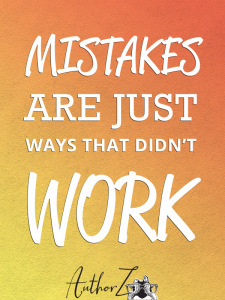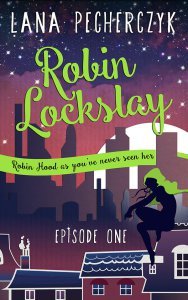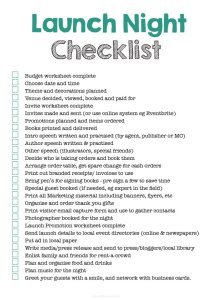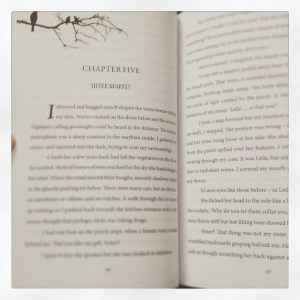Lana Pecherczyk's Blog, page 13
August 18, 2015
Weird Word Wednesday
Braux Pas:
The rare awkward moment between two male acquaintances or friends when the parting gesture (handshake, fist bump, or bro hug) gets fumbled.
The post Weird Word Wednesday appeared first on Author Zoo.

August 9, 2015
N is for Networking
This is one of the most important and at the same time, hardest parts of being a writer. For your professional development, and mental health, I thoroughly recommend getting yourself out there and joining a group of writers. One of the toughest lessons I’ve learned in becoming a writer is that nobody else – and I mean nobody – is as excited about your writing as you are. But other writers come a close second. If you join a group, you can get helpful advice, critical feedback, comradeship, motivation, sales and more.
Here are a list of places you can go to for help:
Amazon Kboards
RWA (has a Facebook group) There is one in America and Australia
She Writes
Facebook groups (search for writers in your area)
Alliance of Independent Authors (they have a Facebook group)
Nanowrimo
Your local library
Follow other writers’ blogs, comment and strike up conversations
Twitter (hashtag #amwriting)
Wattpad
Fan-fiction websites and forums
Pick one or two that tickle your fancy and if you have any other tips or have found a great place to network that’s not listed. Please share with me in the comments.
About the Author
 Lana Pecherczyk Facebook Twitter
Lana Pecherczyk Facebook TwitterLana Pecherczyk is an author, artist and marketer from Perth, Western Australia. She makes a mean chocolate cake, is a fan of 'pro-caffeinating,' and plays make believe with her two little balls of energy (a.k.a. sons). She infuses her mash-ups of romance, fantasy, adventure and sometimes spooky horror with comedy because everyone loves a bit of fun in their lives, right? She also loves Sailormoon. No judgement.
Lana's latest novels are the Rom-Com Mystery, Robin Lockslay, and the Urban Fantasy, Hunting for Witches.
Hire me for Book Cover Design. Learn more about ...
Books | Blog | Hire
The post N is for Networking appeared first on Author Zoo.

July 30, 2015
M is for Mistakes – Self-publishing from A to Z
So, you’re thinking about self-publishing your book? In fact, this is a lesson for all human beings. Be ready to make mistakes and fail a few times. Each time someone tells you they don’t like something about your writing, your book, your website, your life – it’s a punch in the guts. You can’t help feeling like you want to give up, go settle a self-sustaining farm in the country and never talk to another person again. Ever.

Pin this image, or download and pin to your wall
Sometimes the haters are right. Sometimes they’re wrong. Sometimes there’s no way of knowing – and that’s what hurts the most. How do I find out? Why does it matter? And why do I care?
Hell, I’ve probably made mistakes in this post.
The need for social reinforcement is something that’s been ingrained into our DNA since the beginning of time. Just look at what happens to your body when someone smiles at you. You get all warm inside, you smile back and you strive to do better.
So, what’s a healthy way to satisfy that urge for social reinforcement? Tell yourself the mistakes are just ways that didn’t work. Say it together with me: Mistakes are just ways that didn’t work.
Do you know who else says this? Thomas Edison.
“I haven’t failed, I’ve found 10,000 ways that don’t work”
Being a self-publisher means that you are many people at once. You’re not only the author but the marketer, designer, editor, agent and more… that’s no small feat. (Sidebar: High fives to you for having the tenacity to give it a go.) So, don’t be too hard on yourself when things don’t go the right way. It’s called learning.
Do yourself a favour. Next time you put something out there and you didn’t get the reaction you’d hoped for, think less about the need for others to tell you it’s a winner and more about what you need for it to be a winner.
Learn from it.
Try again.
Strive to do better.
Recognise that you are doing the best you can and there’s always people out there who think it’s not enough but, hey, not everyone likes their work (if they’ve even written a book – it’s a lot harder than what people think). And one day, you’ll be a winner. It will happen. And when it does, be nice to the next person who’s in your old position. Remember what it’s like to fail. Lend a helping hand.
About the Author
 Lana Pecherczyk Facebook Twitter
Lana Pecherczyk Facebook TwitterLana Pecherczyk is an author, artist and marketer from Perth, Western Australia. She makes a mean chocolate cake, is a fan of 'pro-cafeinatting,' and plays make believe with her two little balls of energy (a.k.a. sons). She infuses her mash-ups of romance, fantasy, adventure and sometimes spooky horror with comedy because everyone loves a bit of fun in their lives, right? She also loves Sailormoon. No judgement.
Lana's latest novels are the Rom-Com Suspense, Robin Lockslay, and the Urban Fantasy, Hunting for Witches.
Hire me for Book Cover Design. Learn more about ...
Books | Blog | Hire
The post M is for Mistakes – Self-publishing from A to Z appeared first on Author Zoo.

July 21, 2015
Ways Women Writers Can Improve the Way They Write Men (Part 1)
I don’t read romance novels all that much. By that I mean, I don’t really read romance novels. I have tried to read them; I’ve read review after review of romance novels that have a hundred or more 5-star reviews, and despite reading the same book, I’ve come away very unimpressed. It’s not because I feel that the writing is sub-par (though many times it is) and not because I’m not a romantic guy underneath all of my super-macho sexy exterior (I am both ridiculously sexy AND romantic, natch.) Most times it is because the way women writers portray their men is . . . terrible. Or at the very least, grossly inaccurate.
The excuse many women authors use to defend their made-up males is that they are just “fantasy” men the way they wish their men were: muscly, square-jawed, sensual men. Men who are sensitive, strong, and notice all of the little things . . . scratch that. They notice everything and know just what to say to make a girl swoon and feels just as at ease on the dance floor as on the battlefield. By that metric, male authors should be able to write their women characters that happily give sex on demand, are always the picture of beauty and sexiness, and do whatever men say with a giggle and a jiggle.
I’m oversimplifying of course, but I do so to make a point.
When writing, do you strive for veracity in your male characters? Do you want them to feel real? Do you want readers to feel the characters are so real they come alive in their minds? The hope behind these posts is to offer some insights into the male mind so you, as a writer, can write male characters that not only titillate but resonate. If you’re still with me, then take a look at this first post and see if you’re guilty of Sin #1. Also, for the purposes of these posts, our male character will be named Eric, while we’ll call the female character Amber. So here we go.
The Fatal Flaw
Your Male Characters Are Muscular Rainmen
Eric notices every little thing about Amber: her delicate fingers, her eye color, and that adorable beauty mark. He remembers her fragrance (always sweet, never sour), all of her favorite things, and the adorable way she gets the hiccups when she giggles too much.
This little number is a trigger for me to start skimming. I am sorry to be the bearer of bad news, but men do not notice every little thing about women. Even astonishingly attractive women get a generalized assessment. Eric waxing poetic in his head about the curvature of the folds of Amber’s ear lobes and how they blend perfectly into the side of her porcelain face happens exactly zero percent of the time. Nope. It’s a cute little idea, but no.
When most men see a woman, the first thing they register in their manly minds is whether the woman is attractive. It is that simple. Married or single, it doesn’t matter; that’s the first thing. It is not even specific to her chest, face or other body part; it’s general. Mind you, I did not say he decides whether he is attracted to her or not. That is an entirely different thing altogether. Simply put, is she pleasing to his senses? To put a finer point on this vague topic, when I first met my wife and for a matter of months afterward, I couldn’t tell you what her eye color was to save my life. THIS IS A WOMAN I EVENTUALLY MARRIED and I had to make a conscious effort to notice and remember her eye color. That is not hyperbole. I still get nervous when I get quizzed about her eye color.
In a potentially romantic encounter, men don’t see a woman for the first time and memorize all the important details. Men see a woman for the first time and remember how that female makes them feel. Men won’t remember a single thing about how your hair perfectly frames your face. So what do they remember?
How about “do I like her?” Takes you back to passing notes in grade school, doesn’t it? “Check this box if you like me, check this box if you don’t.”
It gets deeper than that, but not much. A man might see a woman who has everything in place. Her hair, nails, clothing, makeup, shoes, purse, jewelry, fragrance, are all perfect (to his liking.) He doesn’t remember 98% of that. He remembers, “I like her a lot.”
Compare it to a work of art. I think it’s safe to say that the majority of people who look at a beautiful painting would recognize its overall beauty and worth without noticing every little detail that goes into it. Most wouldn’t notice the subtle brush strokes or the specific kind of medium used. Not many would know how long the artist took to make it; the number of tries it took before he/she got it right. Only a few would understand the use of masterful texturing and the subtle use of shadow and light to draw the eye.
That’s how a man sees a woman for the first time. He sees her as a whole person, makes his initial assessment and uses it until there is some interaction. It’s at that interaction point the first impression is altered for better or for worse through dialogue and actions.
Ok, so now what? How do you translate that onto the written page? Good question.
So How Do I Fix It?
First thing you do is stop writing page after page of the man’s interior monologue where he comments to himself on what exquisitely beautiful aquamarine eyes your female character has. That isn’t happening. Nope. Stop opening your mouth to argue. It doesn’t. As a matter of fact, a man’s interior monologue should be minimal if any at all. The simple reason is that we just don’t have that much in our heads. Don’t overcomplicate our brains. Unless we have something to think about, we simply don’t think.
Next thing you should do is show the reader through the male character’s actions what he is feeling. I say feeling because once again, thinking for men is an on demand activity not a constant one. Show the reader how attracted he is to your female character by his mannerisms, his speech, and his smile or smirk. Show it by how he treats her and acts around her. In essence, show the reader that a boy likes a girl the same way you know how a boy likes a girl.
It sounds simple, but I’m always surprised by how many romance novels fill a man’s head with fancy words and ideas, some even extending into minor existentialism: “Never before had I seen such a beautiful being. If she were to but kiss me once, I’d die a happy man.” Stop that. That’s just silly.
Instead, keep his thoughts simple, as they should be.
The Example
I sit down on the lounge sofa, giving my feet a much needed rest from a long day at the office. I untie my tie and loosen the collar of my shirt, folding it twice over on the black marble table in front of me. I sink back into the sofa and close my eyes.
“Long day?” A voice came, awaking me from my relaxed state. My eyes pop open and focus on a girl now crouching near me, order pad in her hand. Fugitive locks of her auburn hair swing down into her face before she pushes them back behind her ear.
I clear my throat and sit up straighter, although the soft caress of the leather couch encourages me to stay down. “Something like that,” I reply, blinking the sleep from my eyes as I attempt a smile.
She’s . . . beautiful.
“Can I get you anything?” She asks. Her eyes glance around the room assessing the other patrons.
It can be said that the man in this passage has only a single stated thought. Only one piece of interior monologue. Even still, we know much about him by what he does. He is a white collar working man (the tie and shirt.) He either has a stressful job or one where he works long hours, and since he goes to a lounge/bar after work rather than home, he’s likely single. Also, he thinks this girl taking his order is beautiful. Point being, you don’t need to know his thoughts to know him. Many women (like men) like a little mystery in their dating rituals. The way they are written should be no different.
About the Author
 wimmer147
wimmer147This is part one in a series of posts attempting to shed light on how the male brain works in order to enable more female authors to portray their male characters more realistically in fiction. If there are other things you’d like discussed email the author at douglas@douglasbwimmer.com. Suggestions and comments are always welcome.
The post Ways Women Writers Can Improve the Way They Write Men (Part 1) appeared first on Author Zoo.

July 6, 2015
It’s Serial Time – Tips On Writing Episodic Fiction for Self-Publishing
(Apart from the stuff you eat in the morning.)

My first go at episodic fiction is ‘Robin Lockslay’ – a re-imagined version of Robin Hood.
It’s an episodically released story. Think of a TV show were you get an episode every week or so. The same goes for the written word. Amazon has sections where you can purchase/upload your story in short blocks at regular intervals.
What’s the benefit of doing a Serial?
Ha! This is the first time I’m doing one, so I can’t say from experience. I can pass on the information that I’ve found that has led me to want to tackle this channel myself. I’ve heard that it can be a good marketing strategy, if you have each episode at a low price, then you can entice the reader to buy the pre-ordered next episode. Capitalise on them being hooked on your story. I’ve even heard of putting the first episode as ‘perma-free’ in order to hook the readers and help grow your readership.
Why am I doing a serial?
I hate waiting. It really sucks. I hate waiting to read an awesome story, and I hate waiting to publish my awesome story. So, when I read about serials, I thought I had to give it a crack. The writing process can be long and tedious, especially for heavy plot driven novels. I know that the sequels to my debut novel, Hunting for Witches, will take a while to get out to readers, (by a while, I mean at least 6 months) so I wanted to have a quick, fun, and short read published so I could not only see progress under my name on Amazon, but also something to show my friends and family that yes – I am getting stuff done.
Benefits
You can set your own publishing schedule. If you want to weekly, daily, monthly; you can. Amazon lets you publish your items as a pre-order. I’m going to publish my serial schedule here on this site shortly. Look for it in my books page.
You can choose the length of your serial. Each episode can be what ever page, or word size that you want. Amazon has ‘short read’ categories that it will allocate your book in automatically based on your page length.
You can set your price. I can’t add my first story perma free at the start, but once it’s online, I can have Amazon price match it when they see I’m offering the first episode for free elsewhere. I might try putting the first episode on Wattpad, or use Smashbooks.
You don’t have to wait until you’ve finished the book before you start publishing. If people really like your story the extra downloads will motivate you to finish the book. If they don’t download the story, then you haven’t really lost anything have you?
You can have fun with the ‘pantsing’ style plotting. Meaning, there is little outlining. You come up with the story on the fly. I loved this! It felt as exciting to me as reading a novel.
If you stick to the minimal outlining method, it’s a great way to unblock your brain.
Negatives
You can’t go back and add in the bits you forgot to foreshadow. Well … technically you can, but that means you’ll be changing the story and is unfair to the readers who have already read the episode. If this happens, you need to bite the bullet and just keep writing.
Outlining takes up a lot of time. So if you are a strong plotter, maybe see this as an exercise in loosening up your writing style. Or, just plot like mad before you start.
You have to make sure you aren’t too hard on yourself and choose a genre where it’s not so heavily plot based. I chose the romantic comedy/action mystery genre. Think the Stephanie Plum novels by Janet Evanovich. There’s a lot of random stuff that happens, but in the end, you still get to the finish point. Having a good idea of your climax before you start writing is a good idea.
You need to write fast! So if you are a slow writer, maybe try releasing your episodes once you are fully finished your novel, instead of as you are writing it.
What is my serial?
My serial is called “Robin Lockslay” It is a romantic comedy with a twist of mystery and suspense. As the title suggests, it’s a re-imagining of the historic fable ‘Robin Hood.’ Robin is a girl, and a thief. Here is the blurb:
Robin Hood as you’ve never seen her.
Robin Lockslay, a thief with a heart of gold is caught red-handed relieving Richard Lionhart of his family heirlooms. After Richard discovers Robin giving the loot away to her hungry fellow street urchins, he hires her to ferret out corporate espionage at his multi-billion dollar charitable organisation, The Lionhart Foundation. When Richard goes missing, Robin joins forces with some light fingered friends: Scarlett Wilson, Allana Day, Jonina Little and the mysterious Marius Day. Will she solve the mystery in time to save the man with whom she owes her life?
Here is the first paragraph …
Nominative determinism. It’s a real thing, I kid you not. It’s the theory that a person’s name has inevitable power over the choices you make in life. So, when you hear that my name is Robin Lockslay and I break locks, well, you can make up your own mind. It’s not like the first moment I understood what slay and lock meant that I gravitated toward a hair pin and shoved it in a padlock. Ha! No. There was a series of unfortunate events that led to this moment. A moment where I ran for my life down the tarmac towards a private jet with the son of a billionaire and a case of stolen diamonds.
Comments welcome, and if you would like to be a part of this project as a beta reader, please shoot me a message on the contact page.
The post It’s Serial Time – Tips On Writing Episodic Fiction for Self-Publishing appeared first on Author Zoo.

June 30, 2015
L is for Launch – Self-publishing from A to Z

Click to download a PDF of the book launch night checklist for Free. You can get the other printables by downloading my full book marketing kit at my Etsy store.
Hello there writers. I’ve held one book launch, and it was the most nerve-wracking experience I’ve had in a long time. Lucky for me, I held it at a local Cocktail Gastronomy Bar (The Classroom), so my nerves were easily calmed after fancy drink. But I’m getting ahead of myself, I should start at the beginning.
1. Decide what kind of launch you want.
Do you want to sell lots of books to new readers, book store owners, media? Of course I wanted it all. I sent out a special email invitation to book store owners, but when they all came back with a polite ‘Thanks but no thanks’ my confidence was dashed. I decided that I wasn’t the kind of person to go door to door and push an invitation on strangers, and would rather spend the night with friends and family celebrating the start of my new career and first book.
2. Think about your budget.
Do you want to spend money? Do you want to pay for food? Will you ask for sponsorship? How many books will you print? These are all questions that will help you understand how much money you require. I created a ‘wish list’ then worked backwards. I also held a book plus drink package that people could pre-pay for, so the profit from my book also helped pay for food on the day for guests. On top of my drinks packages, (which I managed through Eventrbite) I requested sponsorship from friends and family and added a special note in the acknowledgements of the book to say thank you.
3. Confirm date and venue
I ensured my launch was around the time I uploaded the manuscript to Kindle Unlimited and Createspace/Ingram. Also, I opted for a Thursday evening, after work so that the room hire was cheaper. I asked for sponsorship and got a great deal. In return, I posted a thanks to the bar in my acknowledgements and donated a signed book to The Classroom’s library wall.
4. Send out invitations
Invite more people than you think will attend. Use an online site like Eventbrite (free) to ensure people register for a ticket. Eventbrite also sends out a reminder email close to your launch to remind people to attend. You can create tickets that cost money if you want to charge entry. As mentioned above, I had a drinks and signed book package – you could do a signed book plus merchandise etc.
5. Write Speech
This was a tough lesson to learn. I’ve always thought I could wing speeches because I tend to talk a lot. But, luckily I wrote it all down because when I had 80 faces staring at me in dead silence – I had a weird out of body experience, if it weren’t for my written words bringing me back to ground, I’d have been done for.
6. Check RSVP’s
If people haven’t RSVP’d, send out a reminder of your event. It’s important for me that I filtered all guests back through Eventrbite so that I could cater for my launch. I ended up selling out to capacity a few days prior to the event.
7. If you have time, send a media release to your local papers.
I didn’t have time to send out a media release, although I did get a small spot post-launch in a local cultural paper X-press Magazine. This didn’t occur because I had sent out media releases, but because I met the journalist a few weeks prior at a function and she remembered my situation. You never know, if you don’t do it. What have you got to lose?
Photos of the Event






1){tpopt.bw=1;tpopt.bh=1}if(tpopt.bw>1){tpopt.bw=1;tpopt.bh=1}tpopt.height=Math.round(tpopt.startheight*(tpopt.width/tpopt.startwidth));if(tpo... cow=tpopt.container.parent().width();var coh=jQuery(window).height();if(tpopt.fullScreenOffsetContainer!=undefined){try{var offcontainers=tpopt.fullScreenOffsetContainer.split(",");jQuery.each(offcontainers,function(e,t){coh=coh-jQuery(t).outerHeight(true);if(coh
Important Links
My Etsy Shop Page for the printable Marketing Kit
My Eventbrite Launch Event Page
About the Author
 Lana Pecherczyk Facebook Twitter
Lana Pecherczyk Facebook TwitterLana lives in Perth, Western Australia and is a writer of Speculative Fiction, Artist and Marketer. She fights evil by moonlight, wins love by daylight, and never runs from a real fight.
Learn more about ...
Books | Blog | Hire
The post L is for Launch – Self-publishing from A to Z appeared first on Author Zoo.

June 23, 2015
K is for Kick-Ass Attitude – Self-publishing from A to Z
Some people call it a thick skin, I call it having a kick-ass attitude.
Over the last two years since I started my writing journey, I’ve gone through many ups and downs. There are moments when you have nothing to show for your efforts except a file hidden away on your laptop, and there are moments where everything you’ve worked for is finally out there, but it’s not the fast lane you expected. Here are a few tips and tid-bits I’ve learnt:
Self-publishing isn’t for the weak. It’s not for those people who give up easily. It’s for those who engrave in their brain the words:
‘I’m going to do this no matter what.’
Sure, you will have days in which you just want to crawl under a rock because that review just wasn’t what you were expecting. You will have moments when the house is a pig-sty, the kids are painting on your fences, the dinner is burning. But hey … you kick ass!
Take one step at a time.
You have to manage your own marketing, your own finances, your own production, your own research and development, and your own actual product development. Don’t let it overwhelm you. Outsource what you can’t do, learn the rest.
Be humble, keep learning.
You are as good a writer as anyone out there, and if you aren’t – strive to be. Ask for help. Get out of your hovel, and meet like minded people. You’d be surprised at how many writers there are out there doing the same thing. You can do this.
Don’t quit your day job.
Even published authors don’t make a bucket load. If you can, set up a stream of non-fiction passive income. I sell printables on Etsy – they helped to finance my last stream of professional editing.
You will probably fail lots and lots and lots. The first ever talk I went to from an award winning author stated:
Be prepared for failure. But keep working.
It will happen eventually. It’s not a matter of if – it’s when.
Hey writers – You kick ass!
The post K is for Kick-Ass Attitude – Self-publishing from A to Z appeared first on Author Zoo.

June 8, 2015
J is for ‘Just Write’ – Self-publishing from A to Z
No matter how much we talk about the best way to get our books noticed, there’s no substitute for just writing the next one. I’ve discovered that many successful self-publishers are doing well because they release books in quick succession. When I first read a Shannon Mayer novel, it was only a few years ago and she had only a handful of books to her name. Now, she has almost 30 novels published! Wowzers! I read on her blog she aims to publish one novel every two months. That’s a hell of a lot quicker than the stock standard one a year in the traditional publishing world. She’s constantly in the top 100 on Amazon in her chosen categories, and she’s a USA today top selling author. So, I’m picking up the ‘Just Write’ vibe and going to try and push myself a little more. The world waits for no one.
For me, I find the best way to keep writing is to establish a momentum and to track my word count daily.
I book in at least an hour a day to write, even if this means getting up at 5am so I can type a couple of words before the munchkins wake up.
How can you write with your brain so foggy in the morning?
Procaffeinate – coffee before typey
Plan your words the night before, I’m a pantser but I read the passage I previously wrote before going to bed.
Have a word count goal.
Other ways you can fit writing into your day …
Dictate into your smart phone
Carry a notebook around and document interesting things
Write in your lunch break
I also find that the more I read, the more my brain keeps those all important words flowing when it’s time to type. Do you have any tips for motivating yourself to write more? I’d love to hear them, please comment below.
The post J is for ‘Just Write’ – Self-publishing from A to Z appeared first on Author Zoo.

June 2, 2015
Margaret Rivers Writers and Readers Festival Wrap Up
Self -publishers are always on the look out for another way to promote their book and to get it in the hands of readers, so when the MRRW festival put the call out for Indi authors to have a stall, I put my hand up. Along for the ride was my Creative Cartel Publishing Co-founder Louisa Loder, author of Stormfate and the soon to be released Firesong.

John Marsden, Me and Isobelle Carmody at the Margaret River Readers and Writers Festival
The event ran across 3 days and boasted talks by two prolific authors – John Marsden and Isobelle Carmody. Many other published authors spoke about their new books, and The Margaret River Press announced winners of their internationally acclaimed short story competition.
So, as a self-published author, you probably want to know …
Was it worth it?
In short – yes and no. No, because I spent more money than I made (I’ll post some tips later explaining what to look out for here). Yes, because I networked, met two of my favourite writers (I’m now a fan for life), and learned a thing or two about what not to do for promoting my book.
How I made it worth it
I had business cards printed and ready to hand out
We had a competition for people to sign up to our mailing list
I had multiple products for sale
I made sure I ducked out to watch a few talks and spoke to my favourite authors
My book is set in Margaret River, so I had a sign up which attracted the attention of buyers
Local connections and new friends were made
What I should have confirmed before paying
The cost of the stall was too high compared to the amount of direct traffic past my stall. When the event organisers explained how many people attended last year, I didn’t take into consideration offsite events and talks that would not relate to direct traffic.
What the layout was like of where we were situated. For example, if there was a competitor near by (we had the local bookshop right next to us, which was great for networking but bad for sales)
The area was two and a half hours away from my home so I booked accommodation, adding to the negative costs of the event. I could have asked for author discounts similar to the others that appeared.
Asking for a spot speaking about the self-publishing industry. The event was heavily traditionally publisher orientated and I think if I could get up and speak on a panel, we may have had more traction.
As a self-published author, do you have any tips on marketing at events?
The post Margaret Rivers Writers and Readers Festival Wrap Up appeared first on Author Zoo.

May 27, 2015
I is for Interior – Self-publishing from A to Z
 Wowzers. You’re ready to start designing the inside of your book. Woohoo! That means you’re almost there.
Wowzers. You’re ready to start designing the inside of your book. Woohoo! That means you’re almost there.
Programmes to use
So, I use Adobe InDesign to create my print document, (see the image on the right) so that I can add special chapter treatment and have more control over images and fonts. I write in Scrivener, so I found it easier to just export from that for the ebook. It does everything for you. I’m going to take a crack at creating the e-book in Apple’s iAuthor for the iBooks store, but I haven’t gotten that far yet. If all else fails here, I can just use the e-pub file you converted from Scrivener to upload to iBooks.
Design terms for Interior Book Design
Some of the terminology that the Print on Demand company use can be a bit confusing to those that have never done this before, so below is a run down of things you need to be aware of.
Bleed: This means the extra bit of design you need to create that will flow off the edge of the paper so when the paper is cut to size, you don’t get any white margins.
Slug: (This is starting to sound like a B-Grade horror movie) Slug means the inside margin where the binding is going to be. Some companies specify that they want this gap bigger than the other margins on the page because the fold will take away some of the room. Because it confuses me every time, I just make sure my entire margin is that of the slug + standard margin.
Pagination: How your page numbers flow.
Place holder text: This is that random Lorem Ipsum fake text people use to put in as a sample. Don’t include any of this in your PDF’s.
Crop marks: Little crosses or ‘L’s’ that you see at the corners of your design. Check to see if your printer requires these or not.
Resolution: This is how detailed your image is and what quality it is. You know when you see pixelation occur in an image? Little squares make the image blurry? This is a low resolution image. For print, your picture needs to be at least 300dpi. If you are in Photoshop, you can set this dpi when you create a new file, or adjust an old one by clicking on ‘Image -> Size’
Pages to include in your novel
The Title Page
Copyright Page
Second Title Page
Dedication Page
Contents (optional)
Prologue (optional)
Chapters
Epilogue (optional)
Glossary (optional – sometimes if the concept is high, you may need this)
Acknowledgments
Authors note
If you are self-publishing, you can virtually pick whatever format you want. Some forward thinking new writers are experimenting with formats and trying new things. Know the rules so you can break the rules.
Fonts to use
Always use a serif font in print – this means the typography with the little ticks at the end of the line. (e.g. Times, Palantino, Baskerville) Sans-serif are usually reserved for the screen, meaning websites. E-readers like serif fonts too. PDF’s often ask that you ’embed’ your fonts. This happens automatically for many PDF converter programs, but if your font is not standard, you may have issues. It’s good to test out opening and printing your PDF on a different computer without having that special font installed.
Well, that’s it folks. I could go on and on forever about interior book design, but that would be cray. If you want to read more on the subject, one of the best resources in the world for this sort of thing is TheBookDesigner.com
If you have any further questions, drop me a line below and I’ll do my best to answer for you.
The post I is for Interior – Self-publishing from A to Z appeared first on Author Zoo.




